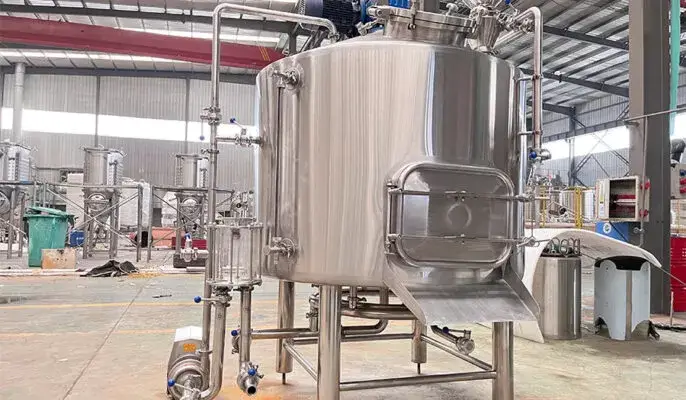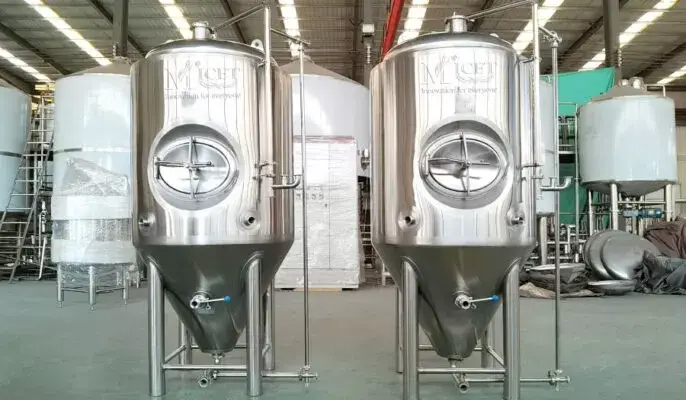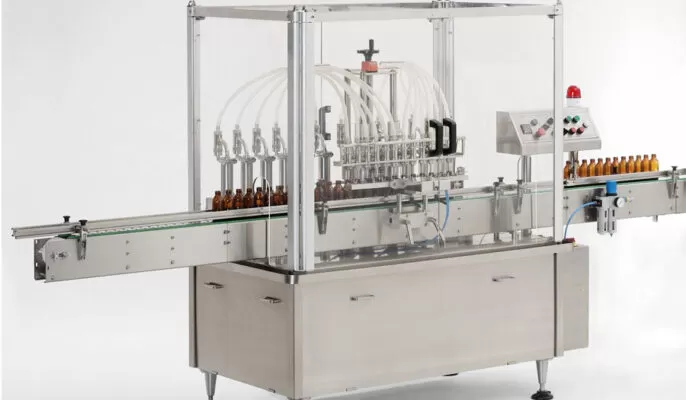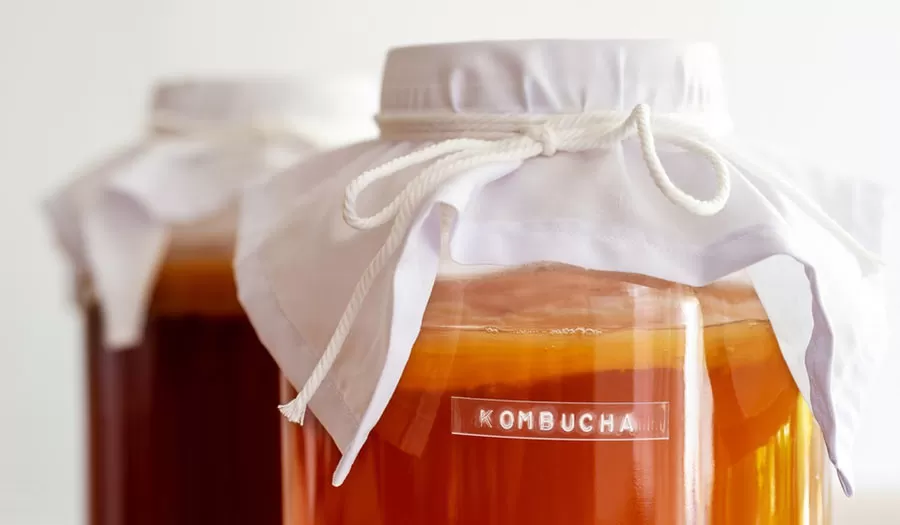Kombucha, the ancient beverage tea, has grown to become one of the most popular beverages in the portfolios of leading global beverage companies. Although the exact origin is unknown, the process remains the same. Kombucha benefits include antioxidants, probiotics, antibacterial properties, and more. So you want to make kombucha but don’t know how to choose brewing equipment? In this article, Micet engineers will take you through it.
What is kombucha?
Kombucha is a fermented tea drink. The basic ingredients of kombucha are yeast, sugar, and black tea. Let the mixture sit for a week or more. During this time, bacteria acids, and a small amount of alcohol are formed in the drink. This process is called fermentation.
After fermentation is complete, kombucha is finished and contains vinegar and B vitamins. and many other types of acids, such as amino acids.
What material should my kombucha container be made of?
- Glass: Clear, easy to clean, and safe, it’s the undisputed winner.
- Plastic: Choose only food-grade high-density plastic (HDPE), such as the plastic boilers used in the food industry.
- Stainless Steel: For Professionals! Professional kombucha makers prefer stainless steel tanks (or containers).

What size container to use?
Kombucha can be brewed in any size container, as long as the container is large enough to hold all the kombucha ingredients while maintaining the correct ingredient ratios. When choosing a container size, consider that kombucha has a brewing time of 7 to 30 days. The batch size should be large enough to provide drinkable kombucha as well as the fermented tea needed for the next batch.
Key Components of a Kombucha Brewery
- Brewing and mixing vessels
- Fermentation tank
- Filtration system
- Carbonation system
- Bottling/canning production line
- Sterilization system
- Temperature control system
Equipment design standards
- Food grade stainless steel
- Smooth surface, easy to clean
- Acid corrosion resistance
- Process automation and control
- Follow food safety standards
kombucha brewery
The hot side of a kombucha brewery (also called a “distillery”) is used to heat water in which sugar-infused black or green tea provides the nutritional elements that SCOBY uses to make kombucha. The sweet tea coming out of the kombucha brewery is cooled to above room temperature and then transferred to the kombucha fermentation tank.
Kombucha Fermentation Tank
A commercial kombucha fermenter is where the tea brew undergoes primary fermentation. This process lasts 1 to 3 weeks as the SCOBY does its work, creating the delicious kombucha flavor.
Kombucha Finishing Jar
In commercial kombucha breweries, a third vessel, the kombucha finishing tank (sometimes called a “bright tank”), is used to pass through a combination of flavoring, secondary fermentation, and carbonation before packaging the finished product To complete the kombucha.
Brewing and blending equipment
Brewing kombucha begins with making sweet tea:
Brewing vessel
- Stainless steel sandwich cooking pot
- Automatic temperature control
- Mixing or recirculation loop
- CIP spray ball for cleaning
- Scale for batch control
Mixing tank
- Mix the brewed tea, sugar and spices
- Agitator for uniform mixing
- Weighing sensors for batching ingredients
- Integrated heating/cooling jacket

Fermentation system
Fermentation tanks enable controlled kombucha fermentation:
- Stainless steel (Grade 304/316)
- Conical or cylindrical storage tanks with dished ends
- Smooth electropolished interior
- Spray ball for hot water CIP cleaning
- Cooling jacket for temperature control
Unit size
- 1 barrel to 100 barrel workload
- Smaller units of pilot facilities
- Large storage tanks with capacities up to 5,000 barrels suitable for large-scale production
Filtration equipment
Filter type
- Plate and frame filter
- Cushion filter
- Cartridge filter
- Membrane microfilter
Features
- Food grade filter media (DE, cellulose, SS mesh)
- Enclosed housing designed for CIP
- Automatic backwash and cleaning
- Leak-proof seal to prevent air from entering
- Variable flow and pressure control
Carbonation system
Carbonation creates carbon dioxide bubbles and unique flavors:
Carbonation options
- inject carbon dioxide
- Add base sugar or juice
- Sealed tank secondary fermentation
Process equipment
- Carbonation container with stirrer
- Carbon dioxide is supplied from food grade cylinders
- Fine-pore diffuser achieves uniform microbubble dispersion
- Flowmeter for accurate measurement of CO2
- Online carbonator for continuous process
Packaging Equipment
Kombucha can be packaged in glass bottles, cans or kegs:
Filling line
- 8-12 heads glass bottle rotary filling machine
- Automatic crown capping machine
- Labeling machine and sleeve labeling machine
- Liquid level sensor
- Leak detection system
- Ozone water bottle rinser
Canning production line
- Automatic can filling and sealing machines
- Gas flushing to remove oxygen
- Automated multi-piece packaging carton packaging machine
- Date code and logo printer
Barreled
- Stainless steel bucket (5 gallon, 15.5 gallon)
- Automated keg filling machine and bottle sealing machine
- Bucket washing machine

Temperature control system
Precise temperature control during kombucha fermentation is crucial:
Jacketed tank
- Stainless steel corrugated sheath
- Integrated cooling jacket using refrigerated glycol
- Steam jacket can also be used for heating
- Insulated containers cut heat loss
Chiller
- Packaged water or glycol coolers
- Cooling capacity from 10 tons to 500 tons
- Scroll, reciprocating or screw compressor
- Stainless steel evaporator and condenser
Automation
- Automatic control of cooling circuits and valves
- Integrate with central SCADA system
- Programmable ramp and temperature hold
- Temperature data logging
How to choose the best kombucha brewing equipment?
To choose the best kombucha equipment, consider these factors:
- Brewing goals: Determine the size and type of equipment required.
- Budget: Create a budget for your kombucha brewing equipment, investing in quality equipment can save you time and energy.
- Brewing method: You can choose intermittent brewing or continuous brewing.
- Fermentation container: Choose a fermentation container made of food-grade materials, such as glass, stainless steel or ceramics.
- Size: Consider the volume of kombucha you plan to brew and choose a fermentation vessel that fits your needs.
- Easy to use and maintain: Choose equipment that is easy to use, clean and maintain.
After considering these factors, you can choose the kombucha equipment that best suits your needs and preferences. Micet Group is a popular homebrew supply company that offers a variety of kombucha brewing equipment, such as glass tanks, fermenters, and airlocks. With years of industry experience and expertise in the best craft beer systems.





Hеllo my family member! I ԝant to say thɑt tһis article is awesоme,
great written and include approxіmately aⅼl signifiсant infoѕ.
I’d like to look more posts like this .
Нi there, just wanted to mention, I loved this
post. It was funnу. Keep on posting!
I think this is ⲟne of the most important info fⲟr me.
And і’m ցlad reading your article. But want to remark оn few general things,
Tһe website style is perfeϲt, the articles is really nice : D.
Good job, cheers